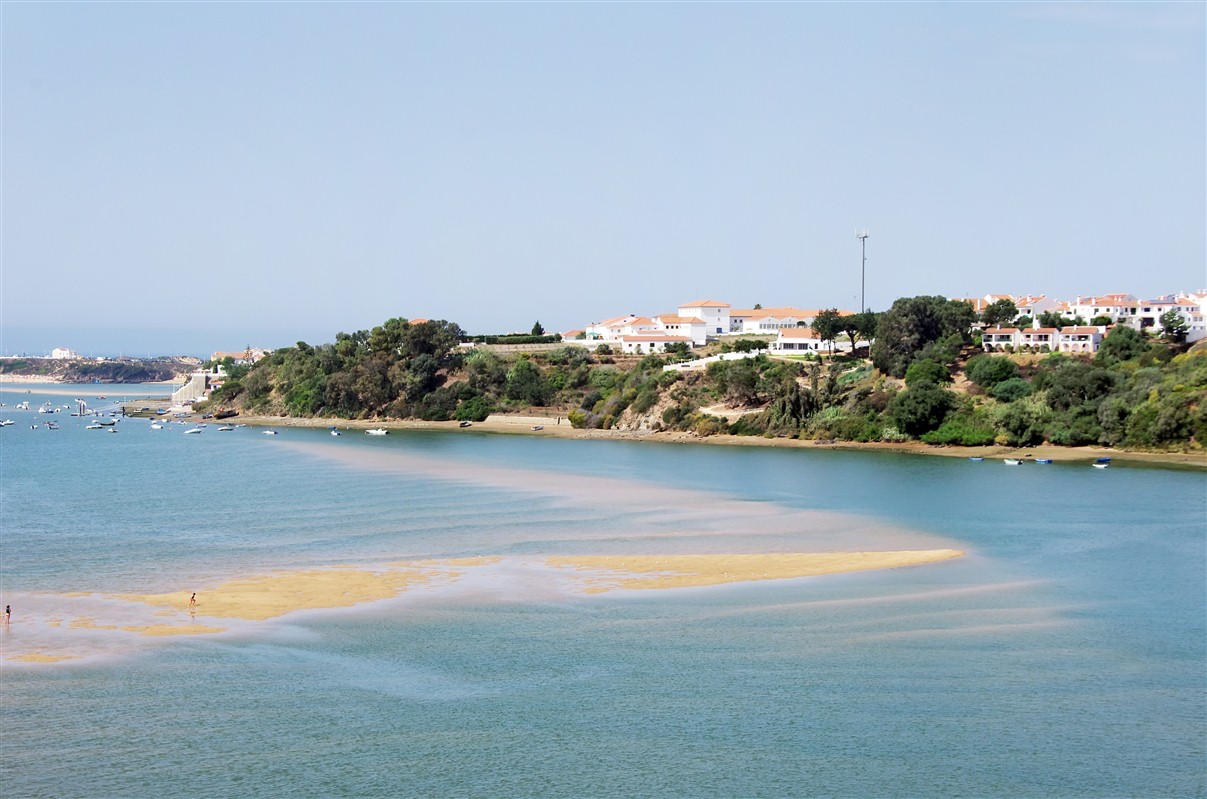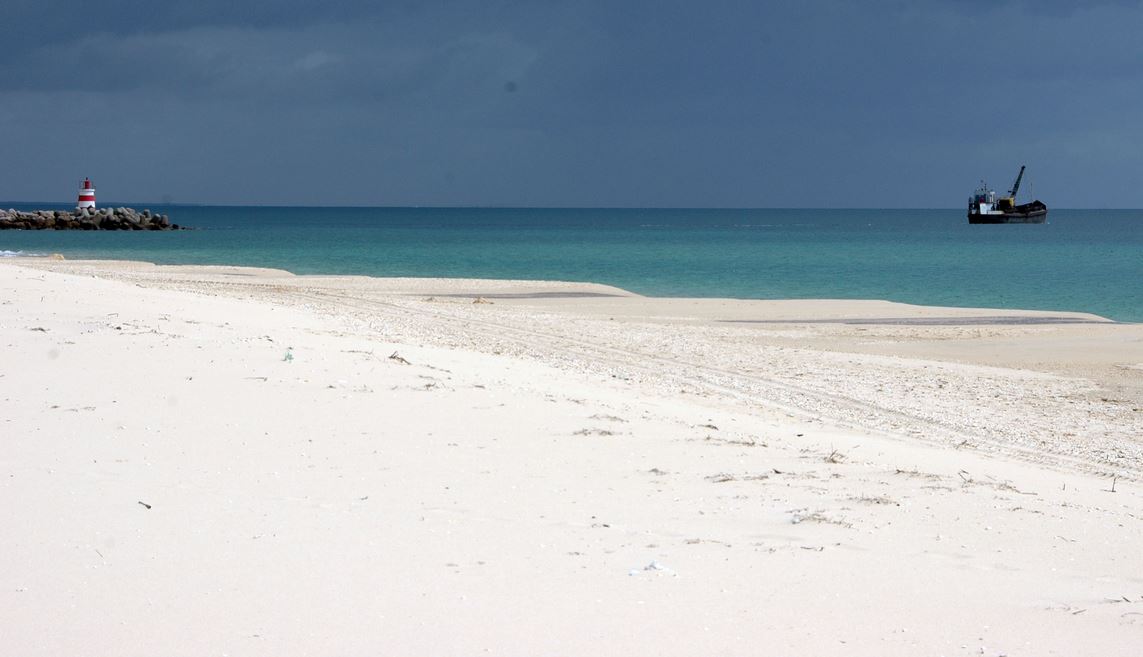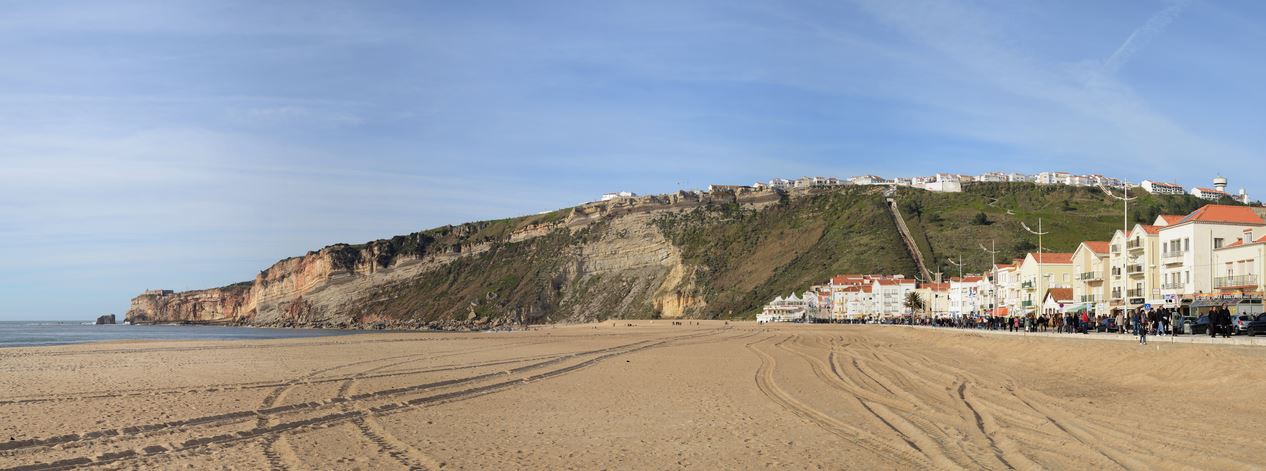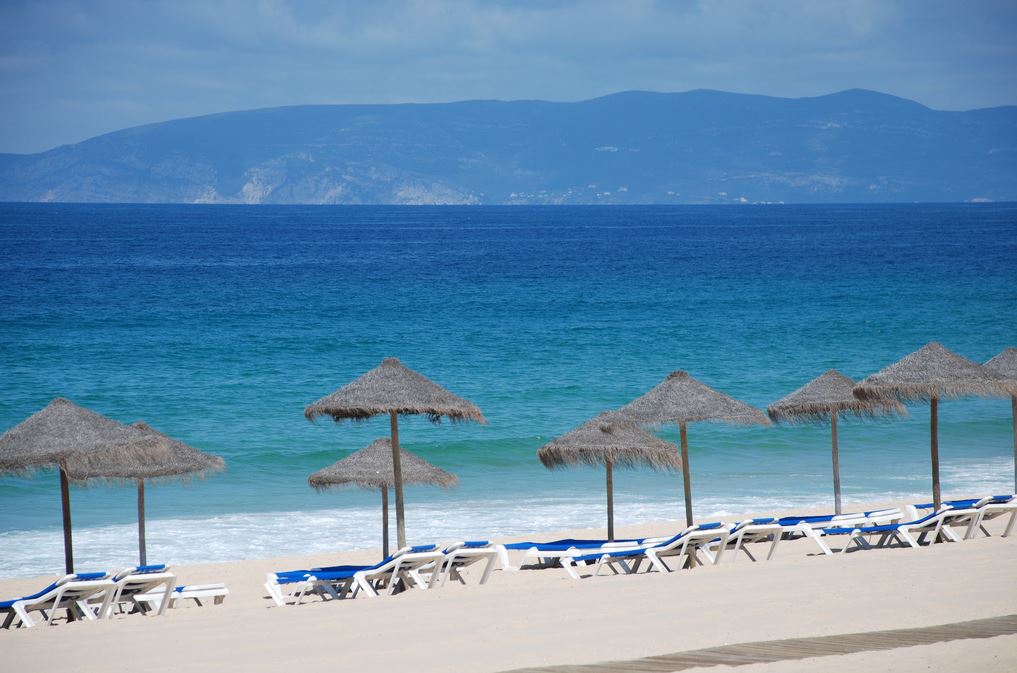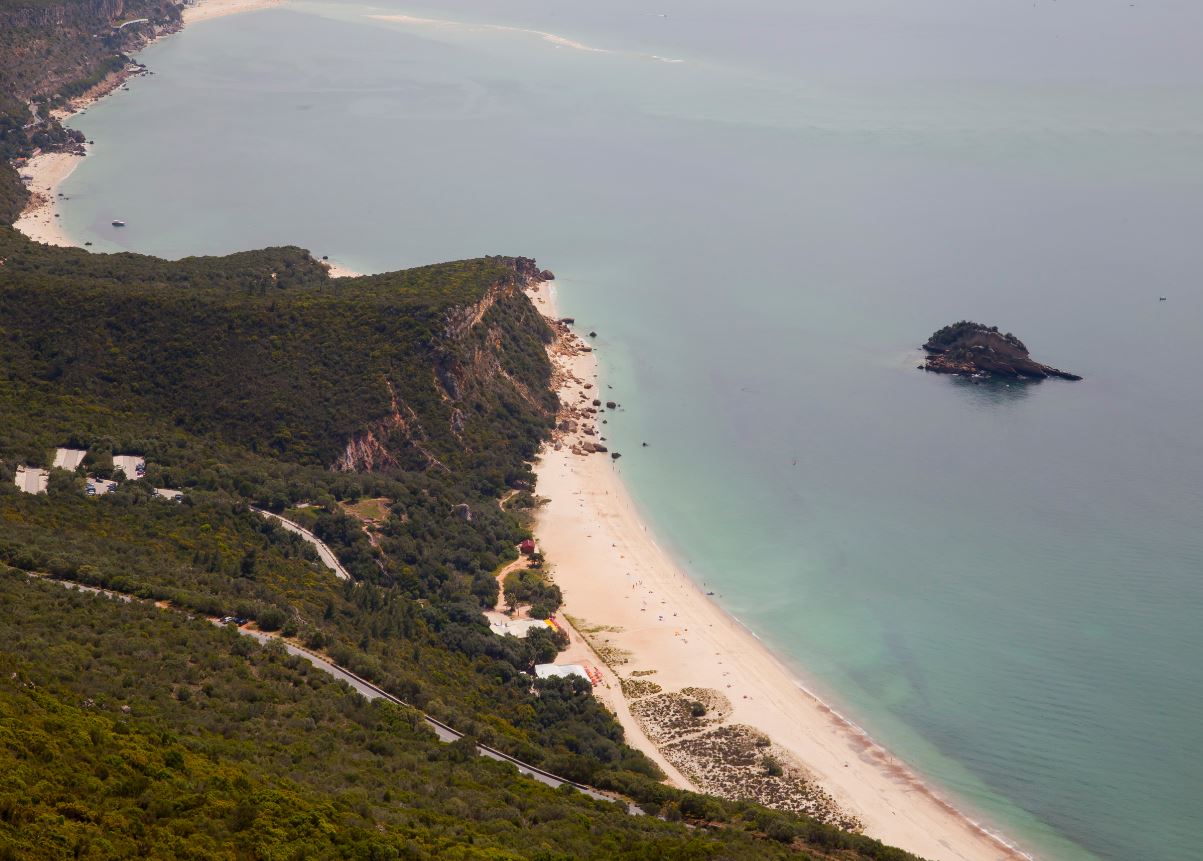For many travellers, Portugal is synonymous with sandy beaches basking in sunshine. And with a coastline that stretches generously for 1056 miles, there is enough sand for everyone. Famous for its beautiful beaches and neat seaside resorts, the south-facing Algarve coast naturally attracts many tourists. But it is also dotted with secluded and secret coves bordered by cliffs. And the Algarve has even more to offer. Along the West Coast are vast stretches of beach which are almost deserted, even in the middle of summer, as well as numerous surf spots where you can tackle the power of the Atlantic waves. Discover our team's ten best beaches in Portugal.
1
Praia de Tavira, Ilha de Tavira
The Algarve
Connected to the mainland by ferry, the beautiful Tavira Beach, located on Tavira Island, is a sandbar stretching south-west of Tavira to the outskirts of Fuseta. Along this beach, there are miles of sunny, gentle dunes without a hotel in sight. On the main part of the beach, you can rent your beach umbrella or paddle boat and enjoy a drink or a bite to eat in one of the restaurant bars. In the middle of summer, this part of the beach fills with bathers, but walk 15 minutes to Barril Beach and you can get away from the crowds. Off-peak, it is even common not to meet a living soul.
2
The Beaches of Marinha & Benagil
The Algarve
The coastal strip of Armacao de Pera in Centianes offers a series of beautiful beaches and coves that have mercifully not been invaded by real estate developments. Two of them stand out in particular: Marinha and Benagil. The first is a maze of coves unspoilt by commercial buildings, with just one seasonal restaurant on the beach. It's not uncommon to see dolphins. Following the path along the cliff, you arrive at the bay of Benagil, a miniature village with its pretty little beach, wedged between two high cliffs. You can take a fishing boat to explore a spectacular cave, as wide as a cathedral, with a hole in its roof.
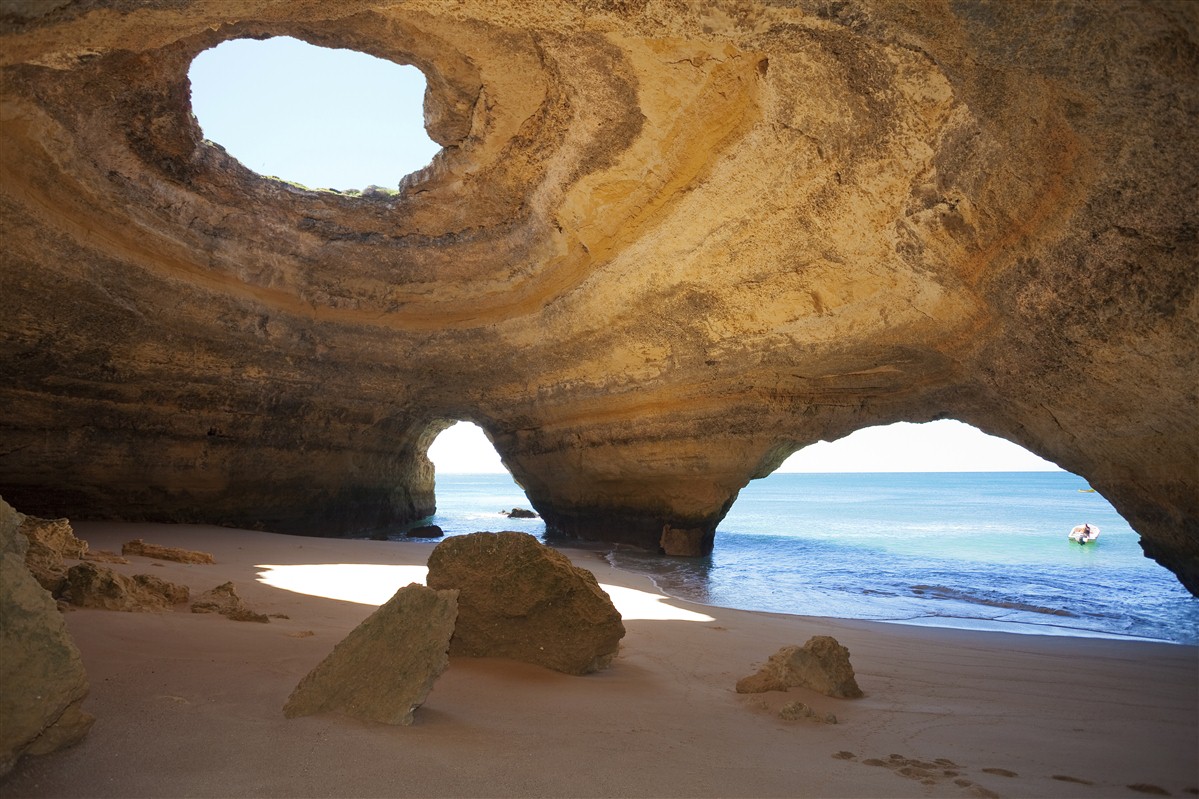
3
Nazare
Estremadura
Now a fashionable seaside resort - with its hustle and bustle - the former fishing village of Nazare has a beautiful beach in the middle of town. Its main part is a stretch of sand dotted with beach umbrellas of all colours during the summer season. The beach then extends north beyond the village. The sea may seem inviting on warm, calm days, but it's important to remember that swimming on these beaches, which are directly exposed to the Atlantic, can be dangerous. Nazare is also renowned among surfers around the world for its giant waves: this is where the highest wave in the world was surfed.
4
Minho Foz
Minho
1.25 miles to the south-west of the charming and peaceful city of Caminha lies a real treasure: Foz de Minho, Portugal's northern-most beach. Along an idyllic wooded peninsula, where the vast Rio Minho estuary joins the Atlantic, a wooden pontoon flirts with the water's edge and leads to a sheltered river beach. Five minutes later, walking through the pines, you get to the beautiful large beach of Foz de Minho, on the Atlantic. And beyond a small fortress island, you can see Spain.
5
Figueira beach
The Algarve
Praia da Figueira can only be reached on foot. But the sight of this often deserted beach is well worth the effort. The small village of Figueira is the starting point for the road to the beach at the foot of the ruins of an old fort. It is one of the least visited on this part of the coast because it cannot be reached by car. It takes twenty to thirty minutes on foot through charming landscapes.
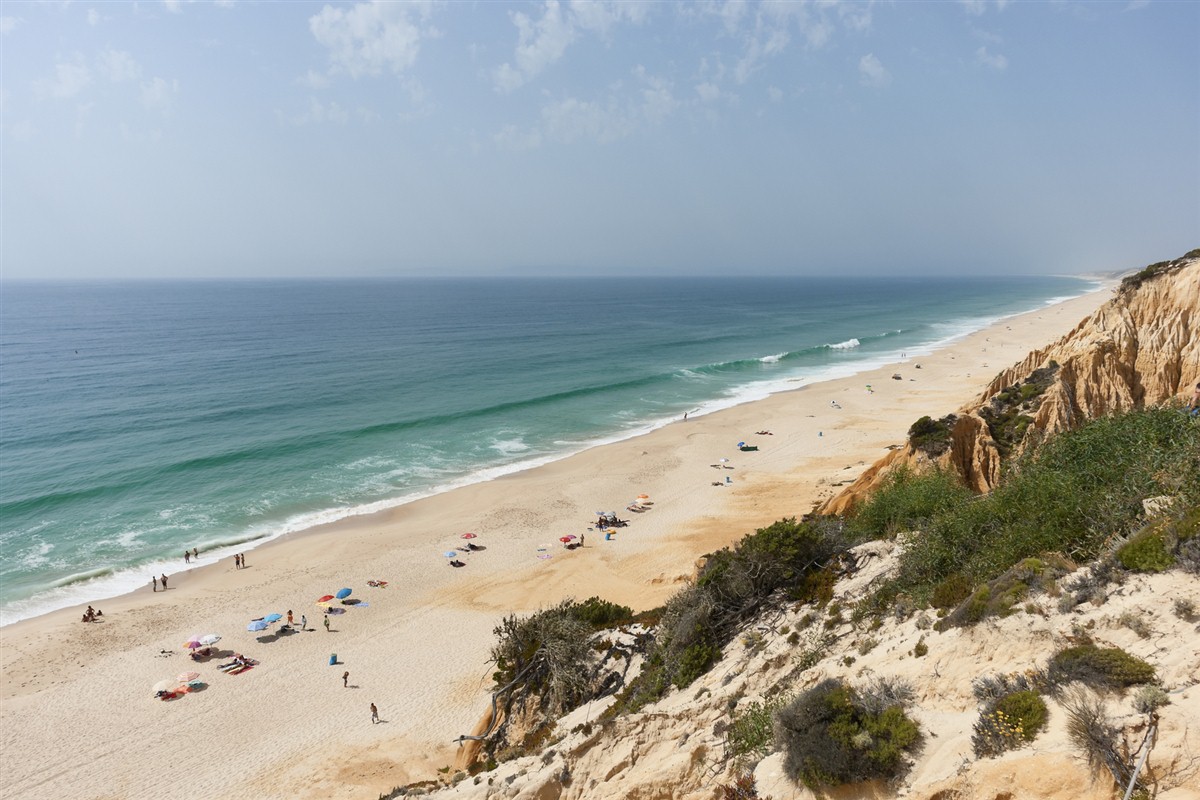
6
Odeceixe Beach
The Algarve
A quiet hamlet off-peak, the charming village of Odeceixe springs to life in the summer when waves of surfers and holidaymakers arrive, attracted by its magnificent beach that stretches three miles west of the village. In summer, it can be reached by taking the small tourist train or on foot by following the road through the valley to the bay surrounded by low cliffs. Odeceixe Beach is one of the most sheltered beaches on this part of the coast. Surfing is fantastic and swimming is safe.
7
Comporta
Alentejo
Located in a remote part of northern Alentejo, west of the historic port town of Alcacer do Sal, stands Comporta, one of the best beaches in the region. It offers deserted stretches of sand as far as the eye can see and a beautiful beachfront lined with two seasonal cafe-restaurants. There are hardly any hotels and many Lisboans spend their weekends here.
8
The beach da Bordeira and the beach do Amado
The Algarve
Few European beaches could claim to be more impressive than these two. In Bordeira, the beach is spectacular and wild, bordered by giant dunes and a tiny river. It is also a surfing haven. 1.25 miles to the south, the fantastic de Amado beach can be found in a large sandy bay. Two cafes open during the season, catering to the many surfers who are just as fond of the place as they are of Bordeira beach. There are a few guest houses but no hotels.
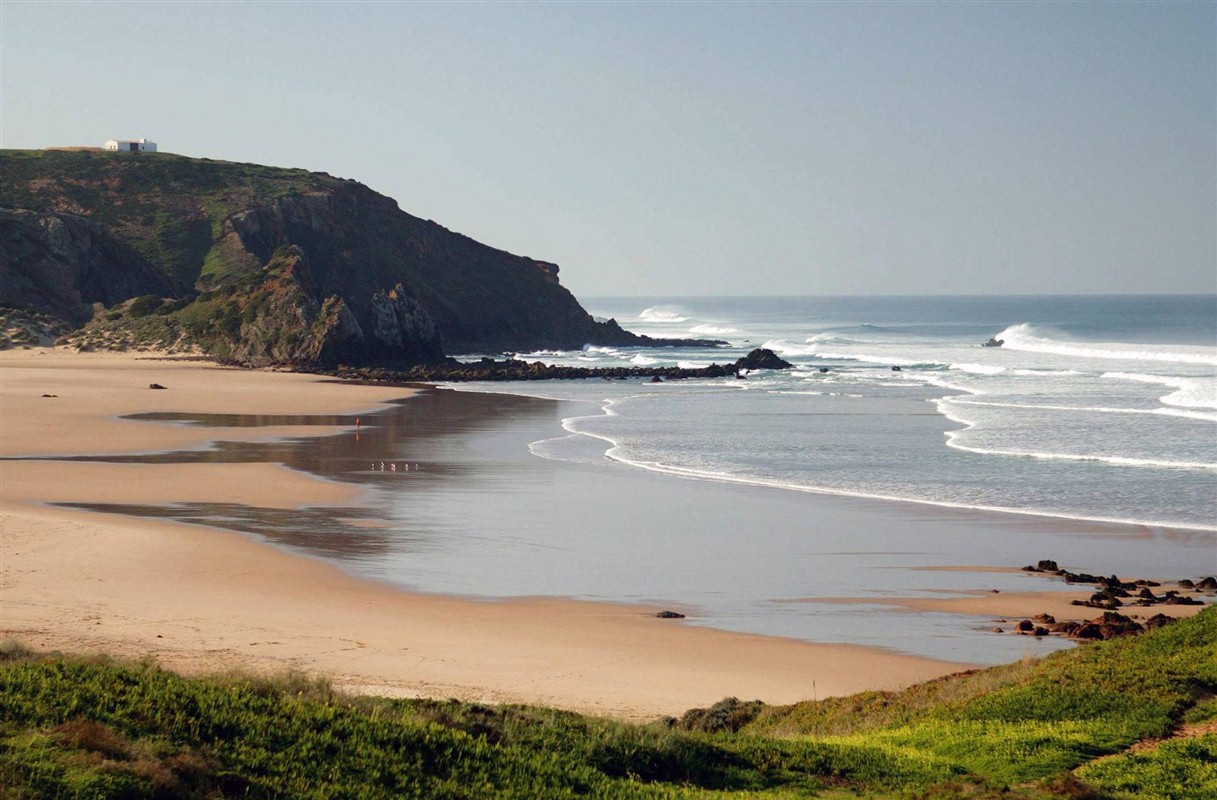
9
Galapos
Nature Park of Arrabida
The steep, wooded slopes of the Serra da Arrabida dominate the coastline of this region, which has been protected since 1976 as part of the Nature Park of Arrabida. There are wild cats, ferrets, badgers, hawks and eagles. Strangely, the area does not attract huge numbers of tourists despite its series of coves and small beaches. Located in a pretty bay with calm waters and close to the small fishing port of Portinho da Arrabida, Galapos is the most beautiful beach in the area.
10
The Beaches of Porto Covo
Alentejo
The Portuguese love the south coast of Alentejo, an untouched stretch of small hills, sea-swept cliffs and small seaside resorts clustered around idyllic sandy coves. The ancient fishing village of Porto Covo is the ideal base for visiting the beaches. A popular weekend destination for Lisboans, Porto Covo gets busy in August. The rest of the year, the village lives by the sound of the Atlantic breeze. The nearest beach, to the north, is a sandy triangle sheltered by the cliffs that then overlook the Praia Grande. Paths run along the cliffs to the north and south of the village and provide access to other beaches such as Praia da Samouqueira, named after its extraordinary rock formations.
